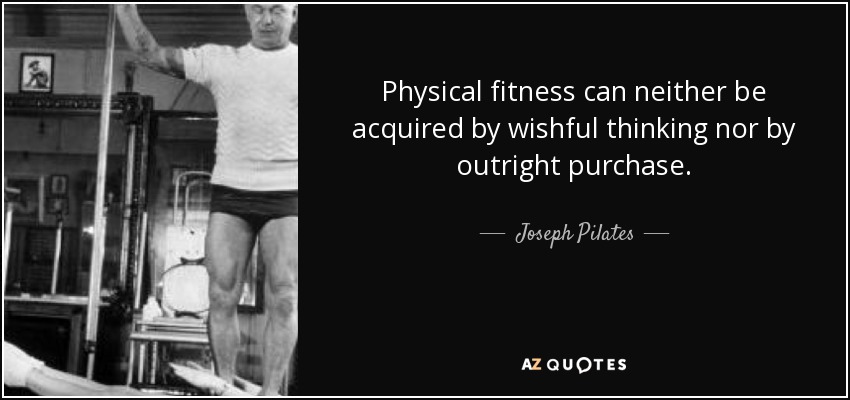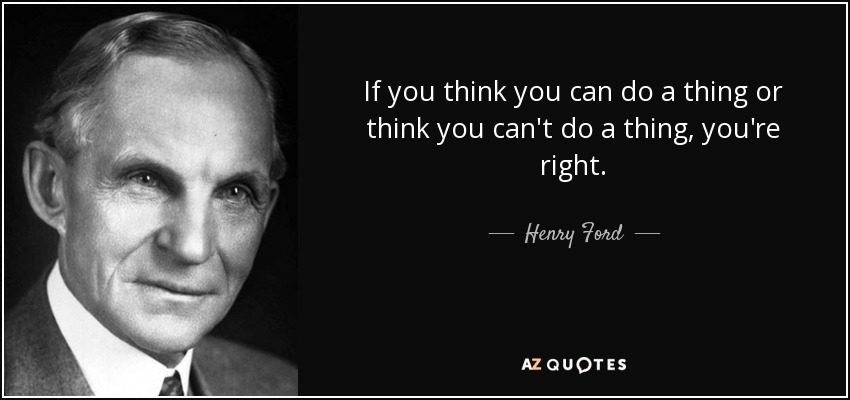Click here to return to Blog Post Intro

Seven common obstacles to building the exercise habit
Obstacle #1: Lack of Knowledge
Some people want to have all the answers before they start. This indecision can often prevent you from starting an exercise program, so the best thing you can do is stop researching and just start moving. This is called “paralysis by analysis.”
Tactic #1: Start at the End
In order to exercise on a regular basis, you need a clear picture of your long-term goals.
Tactic #2: Get Educated
Tactic #3: Try One Exercise at a Time
You may have identified a few different exercise categories that pique your interest, but it is best to start with one, and only one. Starting small will help you stay consistent and prevent those feelings of overwhelm. Go for the small wins.
Pick one exercise to be your focus for the next month. Make a 30-day commitment to this new exercise routine. Many studies have shown that 30 days is a good length of time for developing a new habit. Commit to the exercise every day for the next month.
Obstacle #2: Lack of Motivation
Tactic #4: Use “Habit Anchoring”
After you identify the new habit to which you want to commit, identify a routine that you perform on a daily basis. Then attach the new habit to this behavior.
Tactic #5: Make Micro-Commitments
Another reason people lack exercise motivation is they create goals that are impossible to achieve.
The hot-cold empathy gap (or HCEG) comes into play. To put it simply, the HCEG is a lack of understanding of the level of temptation you’ll feel when encountering a trigger to engage in a bad habit. This trips up many, many people with good intentions.
It’s better to be consistent and exercise on a regular basis than it is to have one great workout and then take two days off. Even if you feel tempted to go bigger with your goal, keep it small, especially in the first 30 days. The goal is to keep your task so small that you cannot fail to achieve it.
Tactic #6: Remove Exercise Obstacles
Start out each morning (when you are at your freshest) by planning out your exercise practice for the day. Be ready for obstacles. Remember that things won’t go smoothly, so don’t get discouraged and quit when you encounter an obstacle.
Tactic #7: Make Exercise Fun

Some things in life may not be as exciting as you might like them to be, but when you are building life-changing, lifelong habits, it’s important to just set your mind on sticking to your commitment.
Tactic #8: Take Advantage of Technology
Many people stay motivated to their walking habit because they’re part of the Fitbit community. The Fitbit tracks daily steps and ranks you against your friends.
Tactic #9: Be Accountable
Tactic #10: Overcome Lack of Results
Remember, the ultimate goal is to create a new daily routine. If you exercise just for weight loss, your time would be better spent focusing on modifying your eating habits (and this doesn’t mean simply dieting).
Tactic #11: Relate Exercise to a Goal
Create a series of S.M.A.R.T. goals that includes both short-term goals (deadlines within three months) and long-term goals (any time after that).
For the short term, your plan should be reasonable and actionable. Stick to easily achievable goals and don’t forget to have fun!
Obstacle #3: Mental Stumbling Blocks
Tactic #12: Re-Align Your Notion of “Exercise”
Any type of consistent, active movement is exercise. That’s right…ANY type of movement is considered exercising your body.
If you a stick to an activity that raises your pulse, produces sweat and can be done on a consistent basis, then that’s good enough to be considered exercise.
Tactic #13: Stop Being Obsessed with Goals
The key is to find that healthy balance. You need goals in your life, but you don’t need obsession.
Tactic #14: Overcome Plateaus
The truth is, there will come a time when repeating the same routine won’t yield the progressive results you once saw.
Tactic #15: Deal with Your Self-Consciousness
Tactic #16: Deal with Self-Sabotage
There’s that little voice in your head giving you many reasons not to do things. The reasons for this often boil down to insecurities, fear and procrastination. Believing you are a failure is a major self-limiting belief. If you let it go unchecked, it can hold you back in all areas of your life.
Obstacle #4: Not Enough Time
Adding exercise to your life requires a time commitment. The “no time” excuse is another one of those things that can hold you back in all areas of your life if you let it.
Stop viewing exercise as an optional activity. Instead of seeing exercise as an inconvenience, you must reframe your perspective and begin viewing it as an opportunity to release stress, get energized and gain clarity on your work day. In fact, working out will increase your productivity, enhance your stamina and decrease your stress levels so you can be a better employee or business owner.
Tactic #17: Get More Time
Tactic #18: Maximize Small Pockets of Time
One of the reasons activity trackers (like the Fitbit) work is because they counts steps. So instead of committing to 30 minutes each day, you make “micro-commitments” to get up and move around as often as you can…even if it is for five minutes here and there. These five- to 10-minute pockets of exercise, a few times each day, can easily add up to 30 minutes or more of exercise time.
Buy a Fitbit or other movement counter to track your steps. Then, create a small goal (like 5,000 steps) and use your short breaks to get at least a little bit of movement.
Tactic #19: Exercise in the Early Morning

Image by David Mark from Pixabay
The first 30 minutes of your day can give you energy that will set the tone and help you succeed for the rest of the day. If you devote your early mornings to your exercise habit, you will be less likely to skip it altogether.
By focusing on exercise in the morning, you will naturally work it into the rest of your day. Your energy level will be higher, and you will begin to enjoy and even crave more movement throughout your day.
Tactic #20: Exercise in the Early Evening
You may discover it relieves stress and helps you unwind after a busy day. And it’s also a much healthier way to relax than alternatives such as heavy drinking or gorging on junk food.
The National Sleep Foundation studied the sleep habits of 1,000 participants and found that an overwhelming majority (83 percent) of people who exercised at any time of day (yep, including late at night) reported sleeping better than those who didn’t exercise at all.
Obstacle #5: Outside Distractions & Disruptions
Tactic #21: Communicate with Family
Tactic #22: Schedule Your Day to Prevent Interruptions
You will always have interruptions. If you let these interruptions dictate your life, you will never, ever accomplish anything beyond the immediate priorities of your job and personal life.
You need to schedule your exercise appointment. Place your workout appointment at the same priority level as you would a meeting with your boss.
Tactic #23: Pay Attention to Weather
Tactic #24: Handle Major Life Disruptions
One frequent excuse is: “Vacation derails my exercise routine, and I never get back on track.”
Be good to yourself. When you can’t keep your exercise commitment in the really difficult times, you must forgive yourself. This stuff happens to all of us.
Bring a pedometer (like the Fitbit) and try to get in 10,000 steps each day.
Tactic #25: Increase Your Energy Levels
Your energy is likely at a low point at the end of the day. The last thing you want to do is think about working out. This is the reason so many people drop their exercise commitments when the going gets tough. Don’t succumb to the desire to quit when your energy levels are low. Instead, look for ways to increase your energy levels so you can continue to meet your exercise goals.
Tactic #26: Find a Low-Cost Exercise Program
My advice is to spend what you can afford on exercise clothing and equipment, and nothing more.
Obstacle #6: You Hate the Gym
Tactic #28: Build a Home Workout Routine
Fun is an ingredient that is crucial to your workout routine. With regard to home workout routines, the best way to accomplish your goal is to find a video led by a person you feel you inspired by.
YouTube is a fantastic resource for both researching a new workout routine and supplementing the exercise you already do. Sometimes, having a visual representation of your workout can keep you inspired, help you practice good form and motivate you to keep working out;
Obstacle #7: Age, Injury, and Soreness
Tactic #29: Know When You’re “Hurt” or “Injured”
There’s an old adage when it comes to pain and competitive sports: Ask yourself: “Are you hurt or injured?”
When your body is sore, start with gentle walking. Just sitting still all day is the worst thing you can do for fatigued muscles.
Having a small, healthy snack after exercise can truly help you feel more comfortable following a workout.
You can’t let a bit of discomfort hold you back from exercising. If you’re smart about how you build up the habit and do the right things afterward, you should be able to recover quickly.
Tactic #30: Consult a Doctor for Injuries
Get a full medical check-up before beginning any new exercise routine.
Tactic #31: Find a Substitute Activity
Go ahead and get into the habit of experimenting with different activities until you find the ones that work for your fitness level and don’t aggravate your injury.
Tactic #32: Evolve Your Exercise Program
One of the most significant “habits” you can incorporate in your life is the ability to mentally reframe what you find acceptable for your exercise routine.
Here are eight steps that will turn this information into action:
- Build One Type of Exercise Habit. It’s important to work on only one habit at a time. That way, your store of willpower can be channeled into completing that one habit, increasing the odds of success.
- Commit to the Habit for 30 Days
- Anchor Your Exercise to an Established Habit
- Take Baby Steps. We’ve already talked about the importance of making micro-commitments and focusing on small wins. Create a micro-commitment where it’s impossible to fail. You want to commit to something so easy that it’s impossible to miss a day.
- Plan for Your Obstacles. Every new routine will have obstacles. Examples of common obstacles: (1) Time; (2) Pain; (3) Weather; (4) Space; (5) Costs; and (6) Self-consciousness. Prepare and anticipate that these obstacles will come.
- Create Accountability for Your Exercise. Track your exercise efforts and make public declarations about your new routine. Never underestimate the power of social approval. Simply knowing you will be held accountable for your habit keeps you focused and consistent.
- Reward Important Milestones. We tend to underestimate the importance of having “fun” while building habits. Often, though, having a clear reward for regularly completing an action will help you to stick to the new routine.
- Build a New Identity. James Clear often talks about something he calls Identity-Based Habits. The idea here is that you can build a lasting habit by making it a reflection of who you are on the inside. Simply put, you need to believe the habit is part of what makes YOU a unique person.
May this National Fitness Day help you focus on Exercising Every Day by overcoming common obstacles and building positive habits, as you shoot for the stars!




